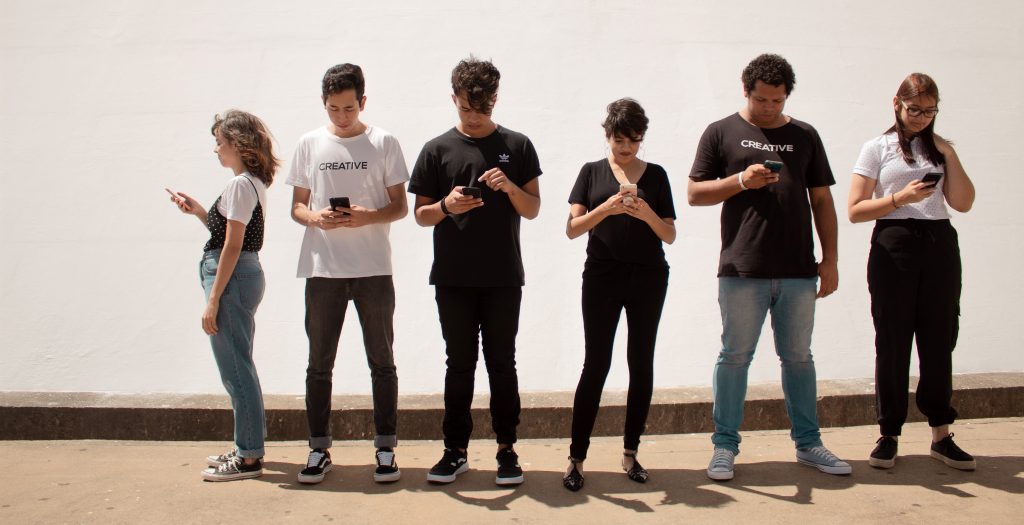A Brief and Interesting History of Digital Marketing
In its infancy, when we Australians spent an average of 1 hour per week online, the internet was just a complimentary medium. It functioned purely as a support to the ‘Big 3’ legacy advertising formats: print, television and radio. If you were a traditional marketer, you added a few web banners to your media schedule and considered yourself cutting edge.
Fast forward to 2022 where the average Australian spends a staggering 32 hours online each week. We live our lives online – we work, shop, relax, socialise and do what feels like an endless amount of ‘life admin’ online every single day. Digital marketing has, in the last decade, moved from being a ‘nice to have’ add-on to a robust offline marketing strategy, to the primary vehicle for brands to connect with consumers. Indeed, for those demographics which shun traditional media like Millennials and Gen Z, it is the only way to reach them.
In the early days, digital or online marketing involved rudimentary ads with no real understanding of the power of data or the backing of sophisticated tracking and retention tools. Any time a product or service is marketed via any type of digital or electronic media, it simply fell into the realm of digital marketing. Three decades later, digital marketing has transformed into a complex beast with several distinct categories and sub-categories. These include SEO, pay-per-click or PPC ads, social media marketing, content and email marketing.
Digital devices have multiplied as well. Laptops, tablets, smartphones, TVs, gaming consoles and more have opened up myriad channels for marketers to utilise in reaching elusive customers.

Major digital marketing developments
The term digital marketing itself was first coined in the ‘90s to coincide with the rising prevalence of personal computers. Marketers initially regarded digital platforms with suspicion, but major technological developments and the subsequent adoption of PCs and personal devices by consumers worldwide changed that. Both the viability of digital marketing and its potential to deeply connect with audiences on a level not seen before became apparent, and
The first of these significant developments involved the evolution of the internet, followed by big data and finally the widespread use of smartphones. Smartphones in particular allowed marketers to precisely target individual consumers through social media. As the number one choice to access the internet for many people around the world smartphone usage has increased by 1.3 billion users between 2016 and 2021, with numbers expected to increase in the next five years.
The history of digital marketing milestones
1993 – Yahoo is launched. Formerly known as “Jerry’s Guide to the World Wide Web” after its founder Jerry Yang, Yahoo received close to 1 million hits in its first year alone. This led marketers to begin optimising websites to rank high in search engine enquiries – the first ever attempt at SEO. In that same year the first clickable banner goes live.
1995 – Recently patented cookie technology is integrated with Internet Explorer. Originally designed to record internet user behaviour, modern cookies are now able to be coded to collect user data in various ways. Advertisers looking to capitalise on the technology use this data to tailor marketing communications to consumers.
1996 – The launch of several more search engines: HotBot, LookSmart, and Alexa.
1998 – Search engine giant Google is born. Microsoft launches the MSN search engine and Yahoo introduces Yahoo web search. Ebay goes public.
1999 – Paypal is launched.
2004 – The emergence of web 2.0 characterised by user-generated content and increased interaction between internet denizens including direct interaction between brands and consumers. Social media site MySpace arrives followed by Facebook.
2006 – Search engine traffic undergoes massive growth, with North American advertisers spending $9.4 billion on SEM. The positive shift in attitude has become truly entrenched as marketers come to appreciate the impact of digital spend.
2014 – E-commerce flourishes as products are now not only marketed online, they’re also able to be purchased and delivered with ease. Growing numbers of international brands establish online stores to reach global shoppers. Meanwhile social media adaptation reaches new peaks as Facebook, Instagram, Twitter, LinkedIn and Pinterest users soar.
Today – Post-COVID e-commerce and digital marketing’s position is cemented as a must-have for brands. Digital is now the new normal. The history of digital marketing – all 30 years of it – are behind us, and ahead? Only time will tell!
Where to from here?
Consumers today are sophisticated, tech-savvy and demanding. Their attention spans are shorter than ever thanks to the thousands of competing messages they see online every day. The business of attracting and retaining customers, maintaining a direct relationship with a brand’s customer base and utilising technology to decipher customer needs are essential functions of the modern digital marketer. No business can do without these skills in their arsenal.
And soon there’ll be even more innovations to contend with, with the utilisation of artificial intelligence, virtual reality, augmented reality and the metaverse on the horizon. As a burgeoning field, there’s no end in sight. As marketers employ increasingly advanced techniques and technology to achieve their objectives, the dreams of today can become the reality of tomorrow.

